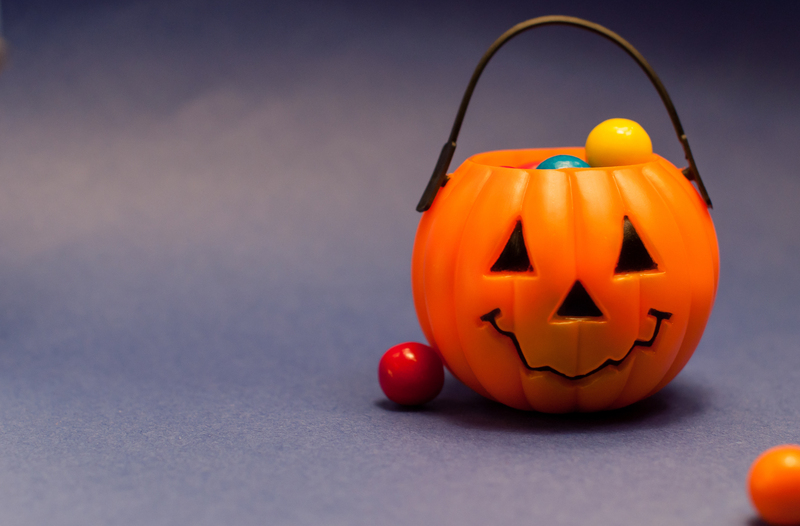Effective Methods for Removing Stubborn Burnt-On Stovetop Residue
Posted on 01/09/2025
Effective Methods for Removing Stubborn Burnt-On Stovetop Residue
Keeping your kitchen clean is essential for both hygiene and aesthetics, but stubborn burnt-on stovetop residue can be a persistent challenge. Burnt-on stains not only compromise the look of your stove but also pose a risk to the longevity and functionality of your appliance. In this comprehensive guide, we explore the most effective methods for removing stubborn burnt-on stovetop residue, providing step-by-step instructions, expert tips, and preventive measures to help restore your stovetop to its original shine.

Understanding Burnt-On Stovetop Residue
Before diving into specific stovetop cleaning methods, it's important to understand why residue forms and how it bonds so tenaciously to the surface. Burnt-on leftovers generally result from food spills, greasy splatters, and sugary drinks that get cooked onto the hot surface. Over time, if not properly addressed, these stains harden, speedily becoming resistant to regular cleaning.
- Greasy Foods: Oils and fats can create a sticky base that bonds with dirt.
- Sugary Spills: Sugar caramelizes upon contact with heat, turning into a hard, burnt residue.
- High Heat: Frequent high-heat cooking bakes on any residues, making them hard to remove.
The sooner you deal with a spill, the easier it is to clean; however, life is busy, and sometimes residue dries and gets baked on. Let's explore the most effective techniques for renewed stovetop sparkle.
Preparation Before Cleaning Burnt-On Stovetop Residue
Safety is paramount when cleaning stove burner stains. Always ensure:
- The stovetop is completely cooled before starting.
- Remove all detachable parts, including burners, grates, and knobs, for separate cleaning.
- Check the manufacturer's guidelines to avoid products or methods that may damage the surface.
Gather the tools and cleaning solutions you'll need:
- Baking soda
- White vinegar
- Lemon juice
- Dish soap
- Razor blade scraper (for glass and ceramic stovetops only)
- Microfiber cloths and sponges
- Plastic spatula or used gift card
- Non-abrasive scrubbers or pads
- Rubber gloves
Top Methods to Remove Stubborn Burnt-On Stovetop Residue
Baking Soda and Vinegar Method
This classic combination is a go-to solution for removing tough stovetop residue. Both baking soda and vinegar are natural, powerful cleaning agents, which together create a fizzing action that helps lift burnt particles.
- Sprinkle a generous amount of baking soda over the burnt-on stains.
- Spray white vinegar over the area until it fizzes and bubbles form.
- Let the mixture sit for 15-30 minutes to break down residue.
- Gently scrub with a non-abrasive sponge or microfiber cloth. For stubborn stains, repeat as necessary.
- Wipe clean with a damp cloth and dry thoroughly.
Lemon and Baking Soda Paste
The acidity of lemon acts as a natural degreaser and deodorizer. Combined with baking soda, it forms a mildly abrasive paste ideal for deep-cleaning burnt stovetop residue.
- Mix fresh lemon juice with baking soda to create a paste.
- Apply the paste liberally to the burned areas.
- Allow it to sit for at least 15 minutes.
- Scrub gently with a damp sponge or cloth in circular motions.
- Rinse with warm water and wipe dry.
Dish Soap and Hot Water Soak
Sometimes, simple solutions are the most effective. A soapy water soak is excellent for loosening stuck-on residue, especially if the stove grates or burner caps are also stained.
- Fill your sink with hot water and add a few drops of dish soap.
- Detach removable stove parts and soak them for 30 minutes.
- Use a soft brush or sponge to scrub away the softened residue.
- For the stovetop surface, place a hot, damp cloth over burned areas for 10-15 minutes to soften residue, then gently wipe clean.
Razor Blade or Scraper Technique (Glass & Ceramic Stovetops Only)
For especially stubborn burnt-on stains on smooth-top ranges, a razor blade or scraper can be carefully employed. Only use this method on glass or ceramic surfaces to avoid scratching or damaging other types of stovetops.
- Hold the blade at a 45-degree angle.
- Gently scrape away the burnt layer, taking care not to gouge the surface.
- Wipe clean with a damp microfiber cloth.
- Repeat as needed, then polish with a stove-top cleaner for extra shine.
Note: Avoid using metal scrapers or abrasive pads on enamel or painted stovetops, as these can scratch and ruin the finish.
Commercial Stovetop Cleaners
A variety of commercial cleaning products are designed specifically for removing burnt-on stovetop residue. Popular brands include Bar Keepers Friend, Weiman Cooktop Cleaner, and Cerama Bryte.
- Always follow the manufacturer's instructions.
- Test a small, inconspicuous area initially to ensure compatibility with your stovetop.
- Typically, these cleaners are applied, left to penetrate, and then wiped away with a soft, damp cloth.
Tailored Techniques for Different Types of Stovetops
Gas Stovetops
- Remove grates and burner caps and soak in hot, soapy water.
- Use a toothbrush and paste made from baking soda and water to scrub intricate areas.
- For stubborn residue, apply vinegar and let sit before scrubbing.
- Ensure all parts are thoroughly dry before reassembling.
Electric Coil Stovetops
- Unplug the burner coils for safety.
- Wipe coils with a damp cloth (do not submerge).
- Clean the drip pans by soaking in hot soap water, then scrubbing away grime.
- Never allow water to seep into electrical connections.
Glass or Ceramic Stovetops
- Use non-abrasive creams or pastes; avoid harsh scrubbers that may scratch.
- Wipe spills promptly to prevent burning.
- Utilize a razor blade scraper very gently for the toughest, burnt-on areas.
Professional Tips for Tackling Extremely Stubborn Burnt Residue
If standard methods fail, professionals offer clever tricks for deep-cleaning burnt stovetop stains:
- Steam Cleaning: A handheld steam cleaner can loosen tough, caked-on residues without harsh chemicals. Direct the nozzle at stubborn spots and wipe clean.
- Ammonia Bag Soak: Place removable grates or burner caps in a sealable plastic bag with a few tablespoons of ammonia. Seal and leave overnight--the fumes will break down the burnt residue. Open in a ventilated area and rinse parts thoroughly before use.
- Magic Erasers: For smooth glass or ceramic surfaces, a damp melamine sponge (Magic Eraser) can help buff away stubborn marks without scratching, but always test first.
Common Mistakes to Avoid When Removing Burnt-On Stove Debris
Some cleaning mistakes can damage your stovetop or make clean-up harder in the future. Avoid the following:
- Abrasive Tools: Steel wool and harsh pads can permanently scratch most stovetops.
- Harsh Chemicals: Avoid bleach or oven cleaners unless specified by the manufacturer--they may discolor or pit the surface.
- Not Letting Products Sit: Allow cleaning solutions or pastes several minutes to penetrate and dissolve residue for best results.
- Mixing Chemicals: Never combine different chemical cleaners, especially with ammonia or bleach, as this can create toxic fumes.
Preventing Future Burnt-On Stovetop Residue
A little maintenance goes a long way in keeping your stovetop gleaming. Here are some stovetop cleaning tips to prevent residue from building up:
- Wipe spills immediately: Hot spills are easier to clean before they harden.
- Use protective covers: Silicone or foil burner covers catch spills and are easy to wash.
- Deep-clean weekly: Don't wait until stains become difficult to remove. Regularly clean with gentle products.
- Monitor heat settings: Cooking on high heat increases the chance of burning spills onto the stove.
- Clean removable parts: Soak and scrub burner caps, grates, and drip pans frequently.
Natural vs. Chemical Solutions: Which is Better?
There's a constant debate: should you clean burnt stove residue naturally or with chemicals? The answer depends on the level of grime, your surface type, and personal preferences.
- Natural Methods (baking soda, vinegar, lemon) are eco-friendly, safe for most surfaces and effective for light to moderate residue.
- Chemical Cleaners are stronger, often faster, but may cause fumes, damage surfaces, or be less environmentally friendly. Reserve them for heavy-duty cleaning or when natural solutions fail.
Always test a small area first, regardless of the method, and consult your stovetop's manual for manufacturer recommendations.

Frequently Asked Questions About Removing Burnt-On Stovetop Residue
Can I use oven cleaner on my stovetop?
Generally, no. Most oven cleaners are too harsh for stovetop surfaces and can cause discoloration or damage. Only use products labeled as safe for stovetops and check your manufacturer's advice.
How long should I let cleaning solutions sit?
Most natural pastes or sprays need to soak for 15-30 minutes to effectively loosen stuck-on debris. Commercial products may differ--read and follow package instructions for best results.
What if residue is stuck between burners or in hard-to-reach crevices?
A toothbrush or cotton swab dipped in cleaning solution can access tight spots. For extreme build-up, you may need to partially disassemble removable parts.
Is it safe to use a razor blade on all stovetops?
No. Razor blades are only recommended for smooth glass or ceramic stovetops. Never use on gas coils or enamel surfaces, as they can scratch or chip the finish.
The Bottom Line: Best Practices for Removing Burnt-On Stovetop Residue
A clean, shining stove brings satisfaction and makes your kitchen more inviting. By following the effective stovetop cleaning methods outlined above, you can safely and thoroughly restore any stovetop, whether gas, electric, or glass, removing even the most stubborn burnt-on residue.
Remember:
- Start with gentler methods and escalate if necessary.
- Be patient--allow cleaning solutions to work their magic over time.
- Regular maintenance is easier than tackling heavy build-up.
Armed with the right techniques and tools, stubborn stains don't stand a chance. Regular cleaning, smart prevention, and awareness of what works best for your specific stove will ensure you enjoy spotless cooking for years to come.
If you've found these tips for removing stubborn burnt-on stovetop residue helpful, share this article and bookmark it for reference. Happy cleaning!




